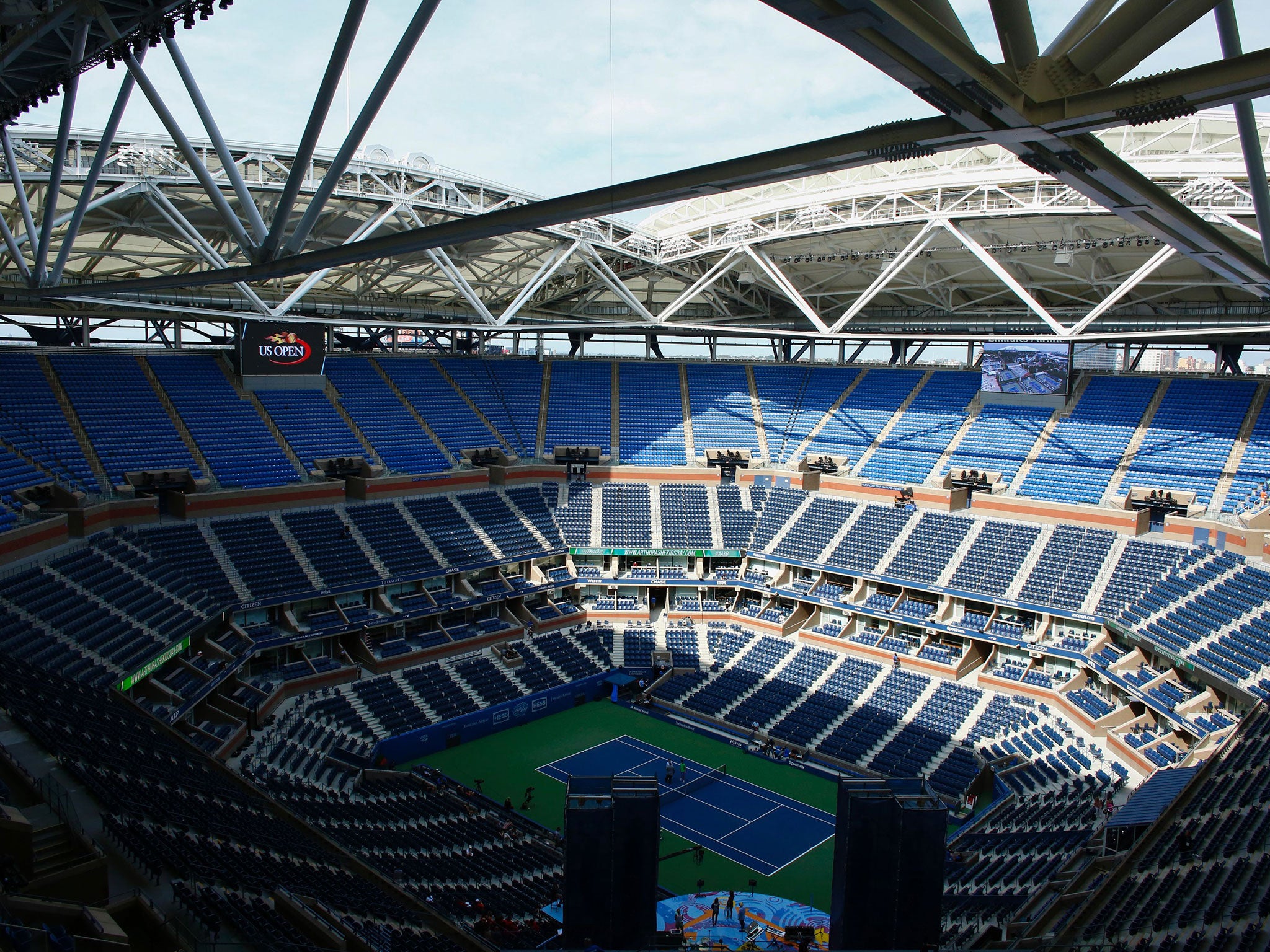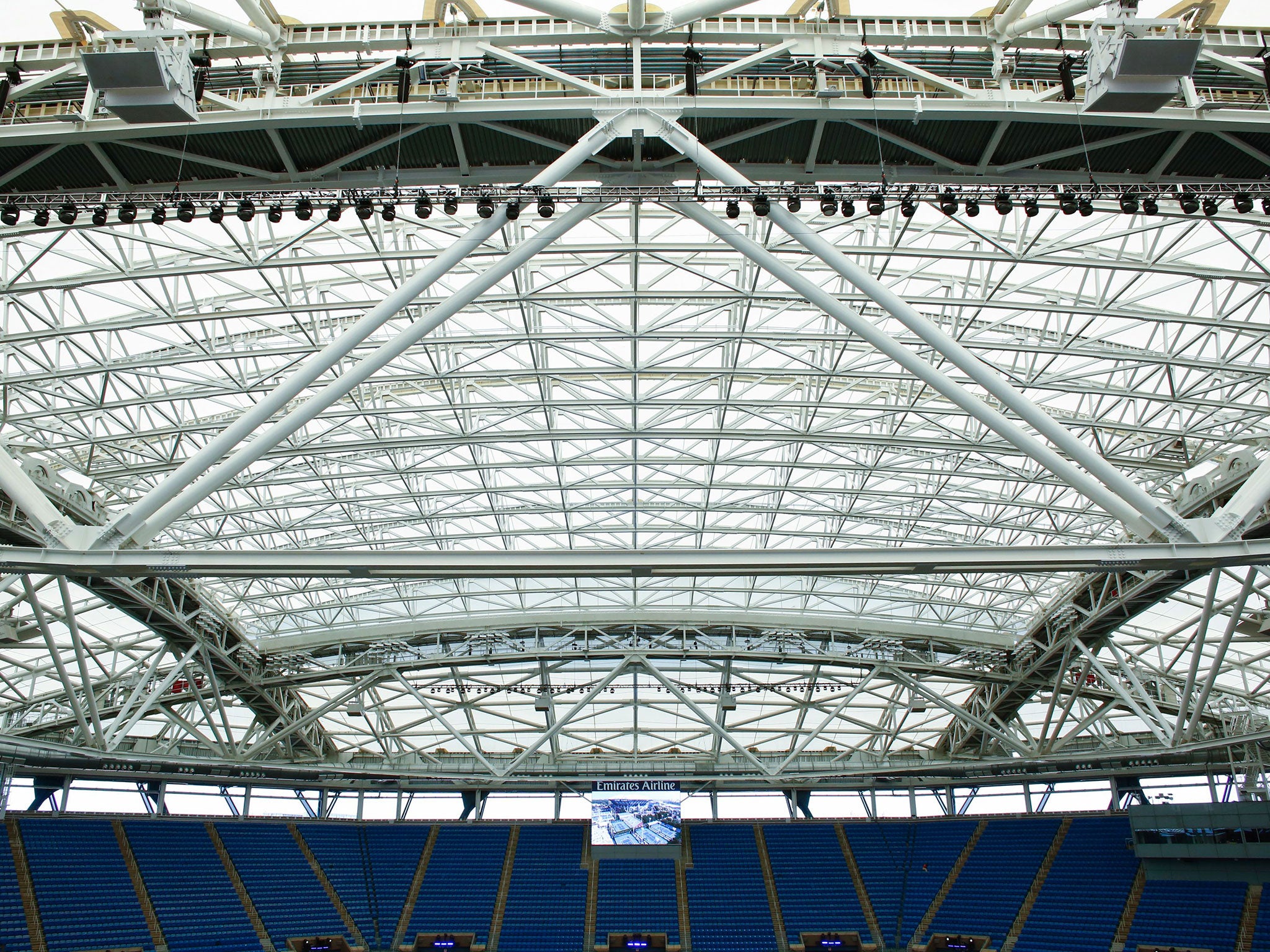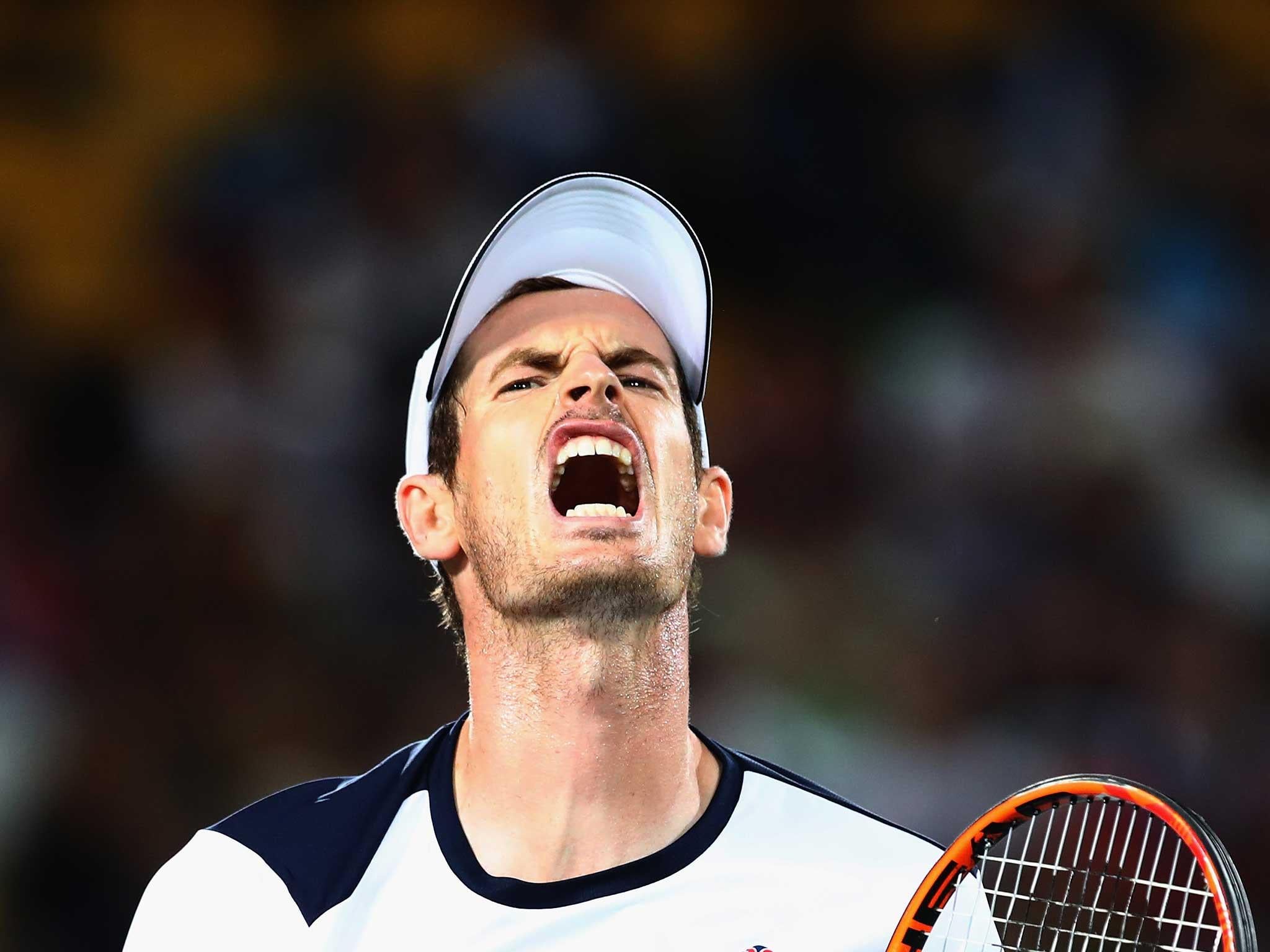US Open: Arthur Ashe unveils shiny new roof as Slams continue to splash the cash
Retractable roof at Flushing Meadow dominates the skyline

As the US Open got under way here on Monday the air was full of uncertainties. Would Novak Djokovic and Serena Williams, the two world No 1s, be able to overcome their respective wrist and shoulder problems? Could Andy Murray crown his magnificent summer by winning his fourth Grand Slam title? And how would the new “all-vegan and vegetarian” outlet in the food court compete with the tournament’s traditional turnover of 225,000 hamburgers and hot dogs?
In the end there was probably only one certainty: that the sun would shine. As the spectacular new retractable roof over Arthur Ashe Stadium makes its debut at this tournament, the weather forecast suggests – just as Wimbledon experienced in the year when the Centre Court roof first came into operation – that the glorious sunshine of the opening day will continue for most of the fortnight. Indeed, since the United States Tennis Association decided to install the roof after rain delays forced the tournament to finish on a Monday for five years in a row, the weather, typically, has rarely been a problem here.
The gleaming white roof – complete with the inevitable enormous sponsor’s logos - dominates the skyline around Flushing Meadows and is a triumph of engineering. The underlying ground in Corona Park was not stable enough to support a new 5,000-ton roof placed on top of the cavernous 24,000-capacity Arthur Ashe Stadium, so instead it has been built as a stand-alone structure around the existing arena, sitting on 24 huge steel columns.
The opening covered by the retractable roof measures 250ft by 250ft, which is the equivalent of more than 20 tennis courts. It shuts in just seven minutes and in most cases the players will not leave the court while it is closing.

Murray, who plays his first-round match against Lukas Rosol in Arthur Ashe Stadium on Tuesday night, is among those who have been impressed. “I think it’s great,” the world No 2 said. “I practised under the roof the other day. It does look amazing and it’s very quick to open and close. There shouldn’t be too many delays. I think it’s a good thing for the players, for the TV, for the media, fans. It works well for everyone. I’ll bet it doesn’t rain this year.”
A number of other improvements have been made this year for the 700,000-odd spectators at what organisers here like to point out is the world’s best attended annual sporting event. The old Grandstand, which was the main show court until Arthur Ashe Stadium was opened in 1997, has been superseded by an imaginatively designed 16-sided structure which retains some of the former arena’s quirkiness. The new Grandstand has more than 8,000 seats, but with a sunken playing area has a welcome feeling of intimacy.
A major new walkway between the east and west sides of the venue has improved access to all areas of the complex, which has been transformed since the first phase of redevelopment in 2011, when a new 2,800-capacity Court 17 was opened. Once this tournament is over, the 10,100-seat Louis Armstrong Stadium will be demolished, to be replaced in 2018 by a new 14,000-capacity arena.
The current phase of redevelopment has cost $550m (more than £420m) and came after both Wimbledon and the Australian Open embarked on major improvement programmes. Although the French Open’s expansion plans have been hampered by the limited capacity of Roland Garros and by opposition from environmentalists and local pressure groups, the general pattern at the four Grand Slam events has been one of rapid growth, strengthening their position at the pinnacle of the sport and increasing the gap between them and the next level of tournaments.

Wimbledon’s next major building programme began within days of Murray winning his second All England Club title last month as work started on removing the roof on No 1 Court, which will have a retractable cover in place by 2019. The cost could match the £100m-plus which was estimated to be the price of Centre Court’s roof. Wimbledon has also built new No 2 and No 3 Courts in recent years and there are plans for several other improvements in the near future.
The Australian Open, meanwhile, became the first Grand Slam event to have three covered courts when it installed a roof over Margaret Court Arena last year as well as a new training complex featuring 29 courts. The first phase of Tennis Australia’s redevelopment programme cost $Aus366m (£212m). A second phase, which is currently under way and includes a refurbishment of the main Rod Laver Arena, will cost $Aus338m (£196m).
Increased income from ticket sales and in particular from major television deals has also helped the Grand Slam tournaments to make big increases in prize money. More than $46.3m (£35.4m) will be paid out to players here over the next fortnight from the biggest prize pot in tennis history.
Irina Falconi became the first player to go out of this year’s tournament when she was beaten 6-2, 6-1 by Cagla Buyukakcay in just 59 minutes, but the American will still receive $43,313 (£33,116) for her efforts. No wonder the Grand Slam events, more than ever, are where everyone wants to play.
Join our commenting forum
Join thought-provoking conversations, follow other Independent readers and see their replies
Comments
Bookmark popover
Removed from bookmarks